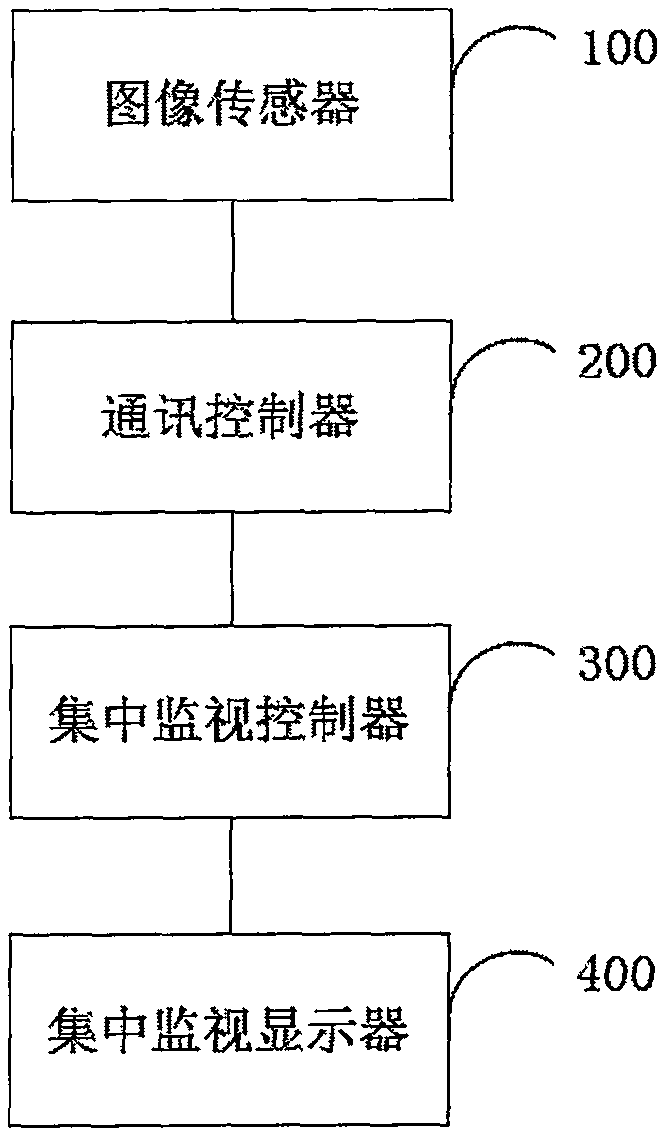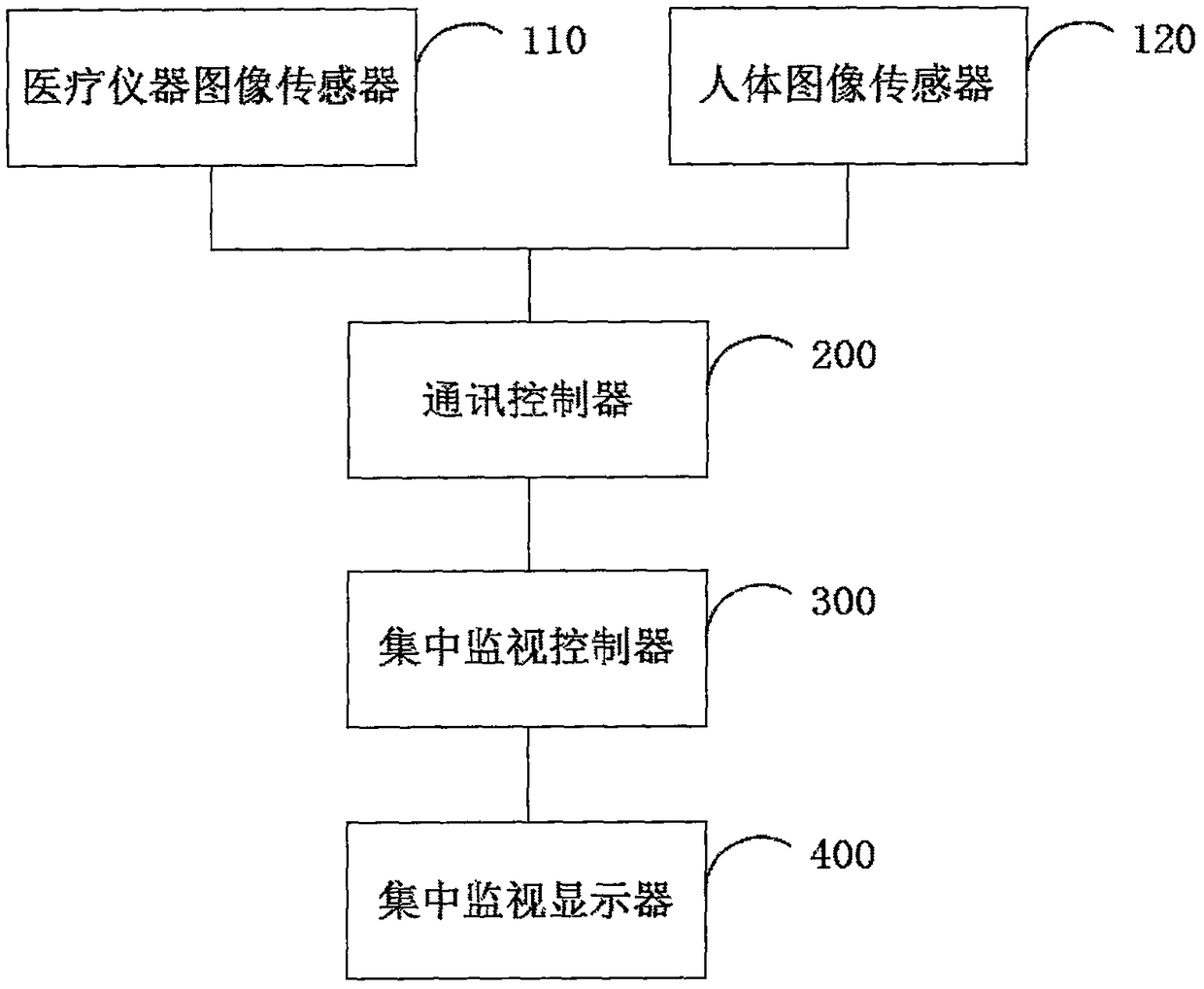Device and method for carrying out centralized monitoring on patients and medical instruments
A medical instrument and instrument technology, which is applied in the field of centralized monitoring of patients and medical instruments, can solve problems such as alarm fatigue and missed opportunities for first aid, and achieve the effect of rapid and accurate judgment
- Summary
- Abstract
- Description
- Claims
- Application Information
AI Technical Summary
Problems solved by technology
Method used
Image
Examples
Embodiment Construction
[0033] The above and other technical features and advantages of the present invention will be clearly and completely described below in conjunction with the accompanying drawings. Apparently, the described embodiments are only some of the embodiments of the present invention, not all of them.
[0034] see figure 1 Embodiment 1 of the present invention provides a device for centralized monitoring of patients and medical instruments, including an image sensor 100 , a communication controller 200 , a centralized monitoring controller 300 and a centralized monitoring display 400 . The image sensor 100 is connected to the centralized monitoring controller 300 through the communication controller 200 . The image sensor 100 is used to obtain the human body image of the patient to be monitored and the display screen image of the medical instrument used under the control of the centralized monitoring controller, and through the communication controller 200, the obtained human body imag...
PUM
 Login to View More
Login to View More Abstract
Description
Claims
Application Information
 Login to View More
Login to View More - R&D
- Intellectual Property
- Life Sciences
- Materials
- Tech Scout
- Unparalleled Data Quality
- Higher Quality Content
- 60% Fewer Hallucinations
Browse by: Latest US Patents, China's latest patents, Technical Efficacy Thesaurus, Application Domain, Technology Topic, Popular Technical Reports.
© 2025 PatSnap. All rights reserved.Legal|Privacy policy|Modern Slavery Act Transparency Statement|Sitemap|About US| Contact US: help@patsnap.com


